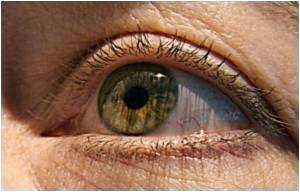Macrophages taken from both old mice and human AMD patients had low levels of ABCA1, a cholesterol transporter known to move cholesterol out of the cells.

Old mice were treated with either an LXR agonist, delivered via eye drops or injection, or a microRNA-33 inhibitor. Both of these drugs increased ABCA1 protein levels and improved cholesterol transport in macrophages, resulting in a reduction in the growth of blood vessels. Because the LXR agonist can be delivered with eye drops, it could potentially cause fewer side effects.
"Abnormal blood vessel growth is a characteristic of not only AMD, but also diverse disease processes outside the eye, including cancers and atherosclerosis, which are both associated with significant morbidity and mortality," Apte says. "Our findings may have significant relevance in our understanding of the pathobiology of these conditions."
Source-Eurekalert











